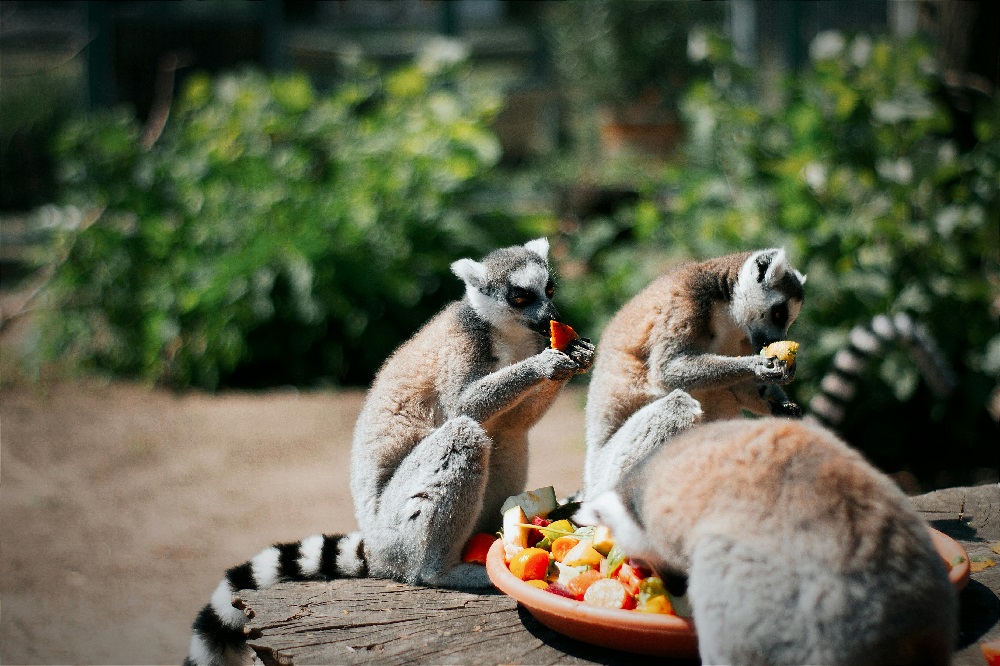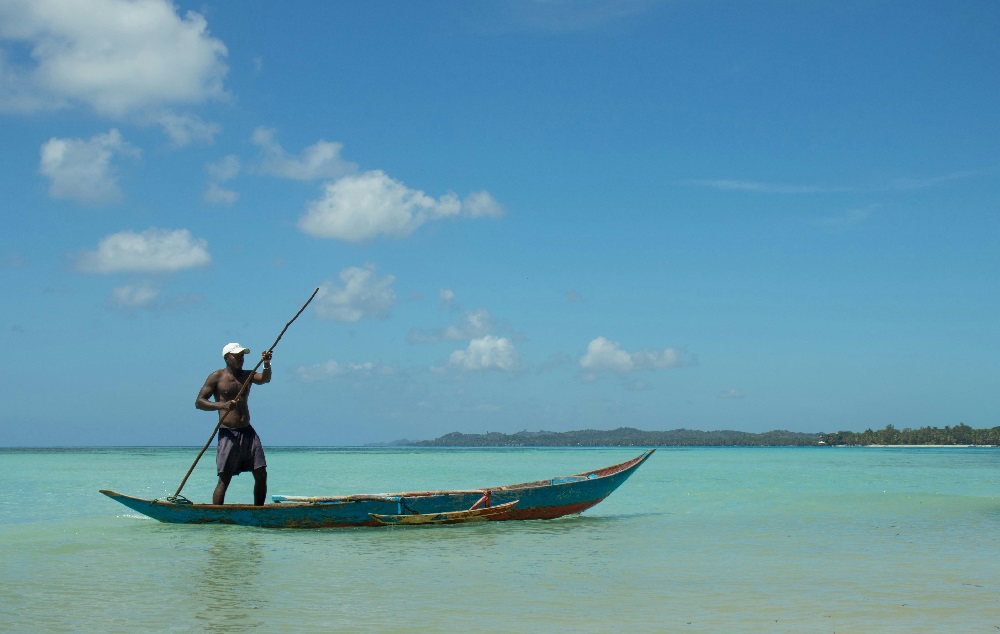While English is recognized as one of the three official languages of Madagascar alongside Malagasy and French, it is not widely spoken across the country, particularly in rural areas. In urban centers like Antananarivo, Antsirabe, or Nosy Be, you will find English speakers in hotels, tourist attractions, and among guides working in the tourism industry. However, French remains the dominant second language after Malagasy, a legacy of the country’s colonial past under France. For day-to-day communication, knowing some basic Malagasy phrases or French words is incredibly helpful for both integration and building relationships with locals. For those considering living in Madagascar long-term, learning the Malagasy language can make a big difference in feeling part of the community and navigating daily life more easily. This is particularly true if you live outside of the main cities, where many people may not have had exposure to English speakers. While the language barrier can be a challenge at first, it also offers an enriching cultural experience and an opportunity to immerse yourself in Madagascar’s unique way of life.

What Are the Negatives of Madagascar?
Madagascar is a country of remarkable beauty and biodiversity, but living here comes with certain challenges that potential residents should be aware of. Infrastructure in many parts of the country is underdeveloped. Roads outside major cities can be poorly maintained, making travel slow and sometimes dangerous, especially during the rainy season. Access to consistent electricity and clean water can be an issue in rural areas, and even in cities, power outages are not uncommon. Healthcare facilities vary greatly in quality, and advanced medical treatment often requires travel abroad or to specialized clinics in the capital. Internet access is growing but can be unreliable outside main hubs. Economically, Madagascar is one of the poorer nations in the world, and poverty is visible in many areas. Corruption and bureaucratic inefficiencies can complicate business dealings and administrative processes. Additionally, the cost of imported goods is high due to transport logistics and limited supply, making some everyday products more expensive than you might expect. For those willing to adapt, these negatives can be manageable, but it’s essential to weigh them against the benefits before committing to a long-term move.
Is Madagascar Safe for Solo Female Travellers?
Madagascar can be a rewarding destination for solo female travelers, but safety requires awareness and preparation. While the majority of Malagasy people are warm and welcoming, crime can be an issue, particularly in larger cities where pickpocketing, bag snatching, and petty theft are more common. Solo female travelers are advised to dress modestly in line with local customs, especially in rural areas, to avoid unwanted attention. Walking alone at night is generally discouraged, and it’s better to use trusted taxi services or travel with others after dark. Outside of urban areas, safety risks are generally lower, but it’s still important to be aware of your surroundings and take standard travel precautions. The cultural norms in Madagascar lean toward respect for women, but unfamiliarity with local customs can sometimes create awkward or uncomfortable situations. By staying informed, avoiding risky areas, and networking with other travelers or expatriates, solo female travelers can have a safe and memorable experience in Madagascar.
What Do People in Madagascar Do for a Living?
The majority of people in Madagascar earn their living from agriculture, which employs roughly 80% of the population. Farming activities are largely subsistence-based, with rice being the staple crop. Other significant agricultural products include vanilla, coffee, cloves, cocoa, and lychees, with Madagascar being one of the world’s largest vanilla exporters. In coastal areas, fishing is a primary livelihood, and in the interior, livestock farming is common. Beyond agriculture, the tourism industry provides jobs in hotels, restaurants, transportation, and guiding services, especially in popular areas like Nosy Be, Morondava, and the national parks. Some Malagasy people work in small-scale manufacturing, mining (for sapphires and other precious stones), and handicrafts, producing items like wooden carvings, woven baskets, and textiles for both domestic use and export. However, formal employment opportunities are limited, and a large portion of the economy operates in the informal sector. This means that entrepreneurship and small businesses play a vital role in sustaining livelihoods across the country.

Why Is Madagascar So Poor?
Madagascar’s poverty is the result of a combination of historical, political, economic, and environmental factors. The country has faced decades of political instability, with frequent changes in government and periods of unrest disrupting economic growth and development. Colonial exploitation by the French left a legacy of underdeveloped infrastructure, and post-independence governance often struggled with corruption and mismanagement of resources. Environmental degradation, such as deforestation and soil erosion, has also reduced the productivity of the land, further limiting economic opportunities. Additionally, Madagascar’s geographic isolation makes trade more expensive and restricts access to international markets. Natural disasters such as cyclones and droughts regularly damage infrastructure and crops, exacerbating poverty. While the country has significant natural resources and incredible biodiversity, limited investment in industries beyond agriculture has prevented large-scale economic diversification. Efforts to improve governance, infrastructure, and sustainable development are ongoing, but progress remains slow due to systemic challenges.
How Big Is Madagascar Compared to the UK?
Madagascar is the fourth largest island in the world, covering an area of about 587,041 square kilometers. This makes it more than twice the size of the United Kingdom, which spans roughly 243,610 square kilometers. While the UK has a much larger population of over 67 million, Madagascar’s population is around 29 million, meaning its population density is far lower. This difference in size and population distribution contributes to Madagascar’s vast stretches of untouched wilderness, diverse ecosystems, and relatively low levels of urbanization. For those considering moving to Madagascar, this means more space, less congestion, and opportunities to live close to nature, but it can also mean longer travel times and more limited access to urban services.
What Are the Homes Like in Madagascar?
Housing in Madagascar varies greatly depending on location and income level. In rural areas, homes are often built from locally available materials such as wood, bamboo, clay, or brick, with thatched or tin roofs. These houses may have limited access to electricity and running water. In towns and cities, houses range from modest single-story buildings to larger, multi-story family homes. The architecture often reflects French colonial influence, especially in older neighborhoods. Modern apartments and houses are available in urban centers for expatriates and wealthier residents, often equipped with reliable electricity, water systems, and sometimes solar panels or generators to cope with power outages. The cost of housing is relatively affordable compared to Western countries, though imported construction materials can raise prices. Renting or buying property in Madagascar is possible for foreigners under certain conditions, but it often requires navigating local regulations and customs.
Is Madagascar Safe for Tourists?
Tourists generally find Madagascar to be a safe and welcoming destination, but as with any country, there are safety considerations. Petty crime such as pickpocketing and bag snatching can occur, especially in crowded markets or city streets. Violent crime against tourists is rare but not unheard of. Most safety concerns are related to theft rather than physical harm. Road safety can be an issue, as some drivers ignore traffic rules and road conditions can be poor. Health-wise, travelers should take precautions against mosquito-borne illnesses like malaria and dengue fever. It’s also important to drink bottled or filtered water to avoid waterborne diseases. Staying alert, avoiding displays of wealth, and using trusted guides or transportation providers can significantly reduce risks. National parks and nature reserves are generally very safe, and the warmth of the Malagasy people often leaves visitors with positive experiences.

Why Is Madagascar So Rich?
Although Madagascar is one of the poorest countries in terms of GDP per capita, it is rich in natural and cultural wealth. The island boasts extraordinary biodiversity, with 90% of its wildlife found nowhere else on Earth, making it a treasure trove for scientists, nature enthusiasts, and conservationists. Its fertile lands produce some of the world’s best vanilla, as well as coffee, cloves, cocoa, and a variety of exotic fruits. Madagascar also has significant mineral resources, including sapphires, graphite, and nickel. The tourism potential is enormous, with pristine beaches, unique wildlife, and cultural heritage drawing visitors from around the globe. However, the challenge lies in translating this natural richness into economic prosperity for the majority of its people. Poor infrastructure, political instability, and limited investment have kept much of this wealth from benefiting the broader population.
Is Madagascar Wealthy or Poor?
Economically, Madagascar is classified as a low-income country. Its GDP per capita is among the lowest in the world, and a large percentage of its population lives below the poverty line. While pockets of wealth exist, especially among business owners, expatriates, and individuals involved in profitable industries like vanilla production or gemstone mining, the wealth gap is significant. Rural communities often face limited access to basic services, healthcare, and education. That being said, wealth in Madagascar is not solely measured by monetary terms. Many people lead rich cultural and social lives, with strong community bonds, a deep connection to the land, and traditions that have been preserved for generations. For someone considering living in Madagascar, understanding this balance between material poverty and cultural wealth is key.
Are You Allowed to Live in Madagascar?
Foreigners can live in Madagascar, but the process requires securing the appropriate visa or residency permit. There are various visa categories, including work visas, investor visas, and long-stay visas for retirees or individuals joining family members. Each type comes with specific requirements, such as proof of income, employment contracts, or business registration. While property ownership laws can be restrictive for foreigners, it is possible to lease property long-term. Expats living in Madagascar often work in NGOs, tourism, education, conservation, or business. Integrating into local life requires adaptability, respect for Malagasy customs, and an openness to the slower pace of life. Many foreigners who move here are drawn by the natural beauty, unique culture, and the opportunity to contribute to community or environmental projects.




